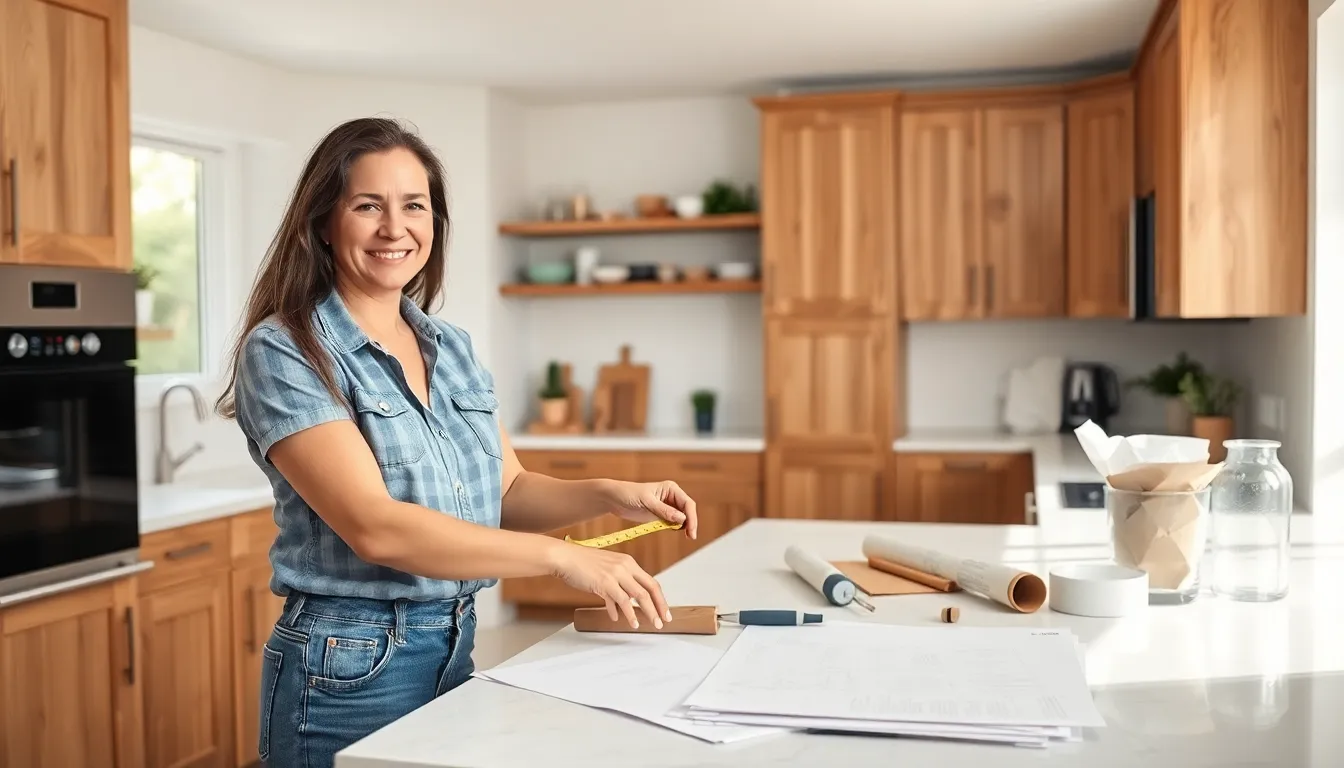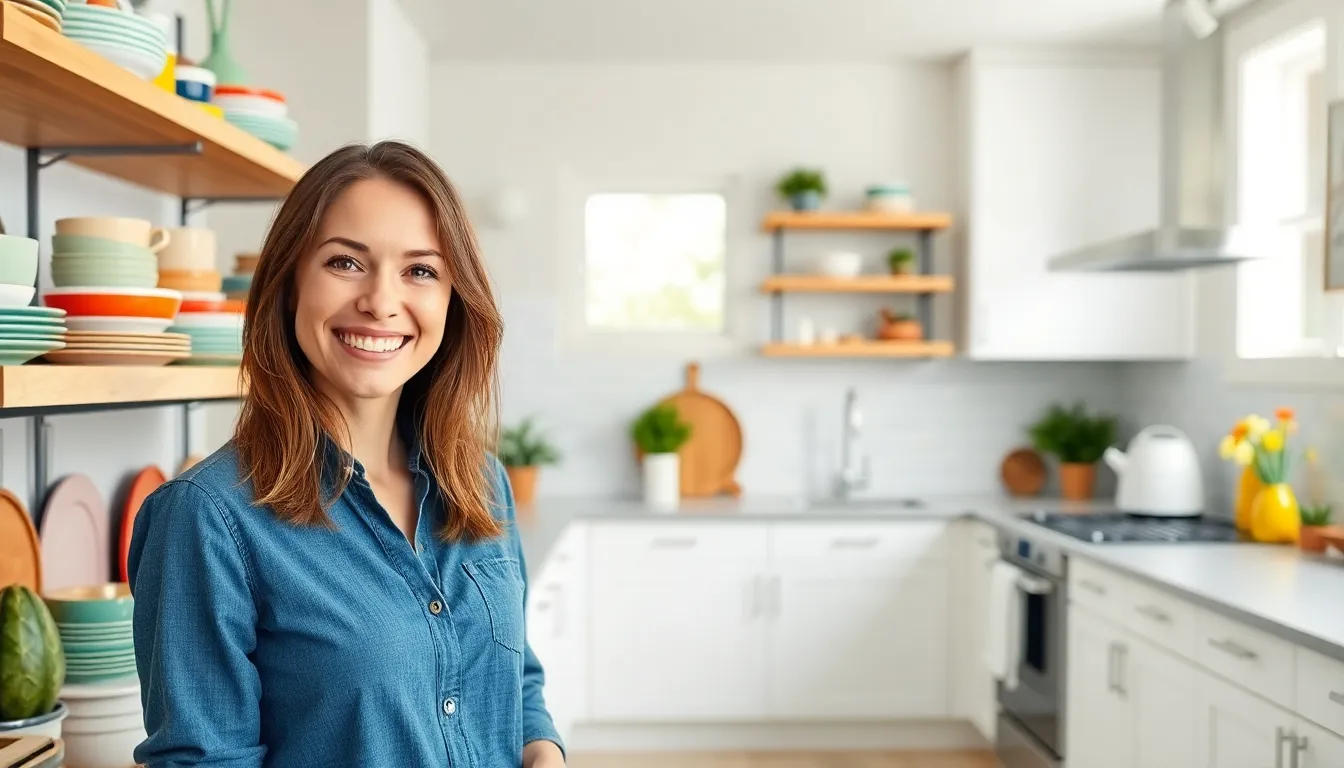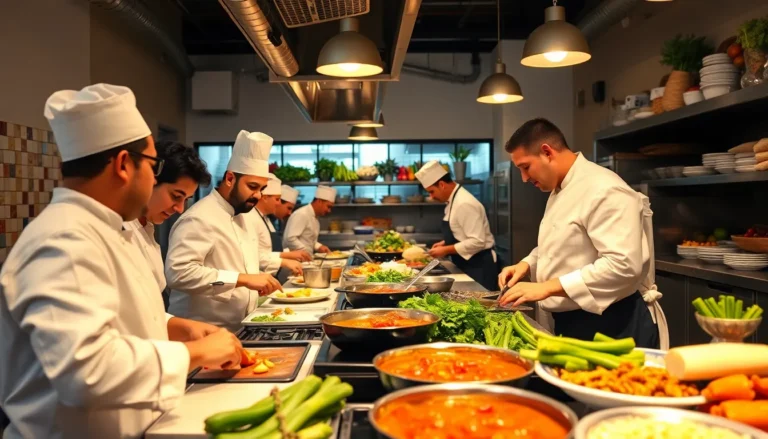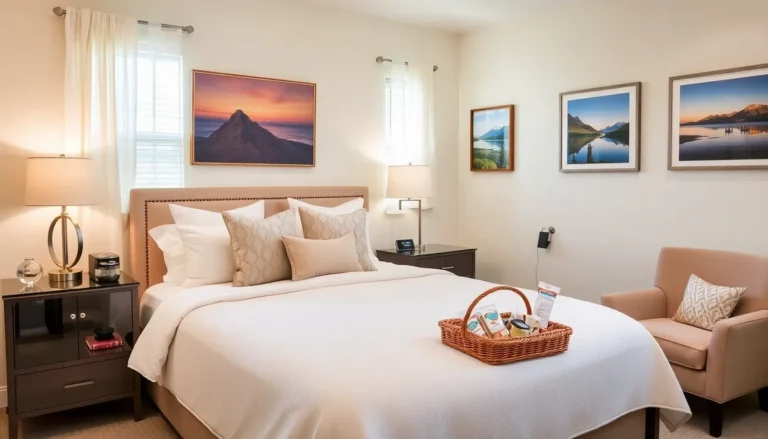Table of Contents
ToggleTransforming a kitchen doesn’t have to feel like preparing a five-course meal on a fast-food budget. With a sprinkle of creativity and a dash of savvy shopping, anyone can whip up a stunning kitchen without emptying their wallet. Who says gourmet style requires gourmet spending?
Understanding Budget Kitchens
Budget kitchens offer a practical approach to creating functional spaces without overspending. By focusing on key elements, anyone can achieve an inviting atmosphere.
Defining Budget Kitchens
Budget kitchens prioritize affordability while maintaining style and functionality. Cost-effective materials and thoughtful design choices create appealing environments. Frugal options include laminate countertops and ready-to-assemble cabinets. Many homeowners opt for second-hand appliances or local marketplace finds, minimizing expenses. Space-saving layouts enhance usability and efficiency. Maximizing what’s available often leads to unique, personalized results.
Benefits of Budget Kitchens
Budget kitchens enable significant savings without sacrificing quality. They allow flexibility for homeowners to invest elsewhere, like decor or renovations. Creative solutions often lead to innovative designs often surpassing traditional kitchens. Many enjoy the thrill of DIY projects, fostering a sense of accomplishment. Affordability promotes sustainability, as reused items reduce waste. Increased value appears in properties with well-planned budget kitchens, attracting prospective buyers.
Planning Your Budget Kitchen

Planning a budget kitchen starts with understanding your financial limits and knowing where to allocate funds.
Setting a Realistic Budget
Establish a comprehensive budget that covers all aspects of the kitchen renovation. Consider costs for materials, appliances, and labor. Listing items can clarify expenses and help avoid overspending. Homeowners should also factor in unexpected costs, as they often arise during renovations. Allocate a contingency fund of around 10% of your total budget to address these surprises. Reviewing local prices can ensure a more accurate budget. Gathering quotes from different suppliers allows comparisons and helps achieve the best deals.
Prioritizing Essential Features
Focus on features that enhance functionality and aesthetics first. Identify critical elements, like cabinets, countertops, and appliances, that impact daily use. Selecting durable materials can minimize future repair costs. Prioritize storage solutions, as an organized kitchen improves workflow. Attention to lighting also enhances the space significantly. Choose fixtures that create a warm atmosphere, making the kitchen inviting. Finally, consider how each feature contributes to overall design and utility during the planning phase.
Cost-Effective Design Ideas
Transforming a kitchen on a budget involves clever design strategies that maximize space and utility. Focusing on functionality alongside aesthetics enhances both the cooking experience and the overall environment.
Optimal Layouts for Small Spaces
Employing an efficient layout boosts the usability of small kitchens. The galley layout, featuring a narrow design with parallel counters, maximizes space for cooking and movement. L-shaped kitchens offer corner efficiency, while U-shaped designs enhance workspace, utilizing all walls for storage and appliances. Think about open shelving to create an illusion of space, making small areas feel larger. Prioritizing flow between key work areas—preparation, cooking, and cleaning—ensures a functional arrangement that supports cooking tasks effectively.
Utilizing Multi-Functional Furniture
Incorporating multi-functional furniture provides versatility without cluttering the kitchen. Consider an island that doubles as a dining space, allowing for meal preparation and eating without needing extra tables. Nested tables or collapsible units offer additional workspace when required but tuck away easily for more space. Stools with built-in storage contribute to efficiency, providing seating while hiding kitchen tools. Select items that serve multiple purposes to streamline the design and maintain an inviting, organized environment. Maximizing the functionality of furniture keeps a kitchen both practical and stylish.
Affordable Materials and Finishes
Creating a budget-friendly kitchen involves selecting the right materials and finishes that maintain style without breaking the bank. Prioritizing cost-effective options can significantly impact the overall design.
Budget-Friendly Countertops
Laminate countertops offer an affordable alternative to natural stone, providing durability and a range of styles. They come in various colors and patterns, mimicking expensive materials while remaining accessible. Quartz is another option, available at lower price points compared to granite. Affordable ceramic tiles allow for customization and easy maintenance, becoming a popular choice for both backsplashes and countertops. Investing in a solid surface can give the illusion of luxury without the hefty price tag.
Choosing Economical Cabinets
Ready-to-assemble cabinets provide an economical solution for budget kitchens. These cabinets not only lower labor costs but also offer numerous styles and finishes. Stock cabinets, typically pre-manufactured, allow for quick installation and can fit standard kitchen dimensions. Refurbishing existing cabinets by painting or adding new hardware is a cost-saving strategy that breathes new life into outdated designs. Innovatively selecting open shelving can create an airy feel while providing a place for frequently used items.
DIY vs Hiring Professionals
Deciding between DIY and hiring professionals often depends on budget and skill level. Both options can deliver stunning results with proper planning.
When to DIY
Considering DIY projects is ideal when the scope remains manageable. Smaller tasks such as painting cabinets or installing backsplash tiles often fall into this category. Homeowners with some renovation experience can confidently tackle these projects, especially when detailed tutorials are readily available online. Time availability influences decision-making as well. Those ready to invest the hours may uncover unique touches that reflect personal style. Furthermore, significant savings arise from undertaking tasks without labor costs, allowing funds to be redirected towards quality materials.
Finding Affordable Contractors
Finding affordable contractors can enhance the kitchen remodeling process while maintaining quality. Begin by gathering recommendations from friends and family or checking online reviews. Comparing estimates from various contractors often reveals budget-friendly options without sacrificing craftsmanship. Ask for detailed quotes to understand what each service includes. Prioritize checking credentials and insurance to ensure professionalism. Additionally, seeking contractors who specialize in budget renovations can further align with cost-effective goals. Engaging with local small businesses may yield more reasonable rates than larger firms, as they often aim to build long-term relationships with clients.
Creating a beautiful kitchen on a budget is entirely achievable with the right approach. By focusing on smart design choices and cost-effective materials, homeowners can transform their spaces without overspending. Prioritizing essential features and incorporating clever storage solutions enhances both functionality and aesthetics.
DIY projects offer a fantastic opportunity to personalize the kitchen while saving on labor costs. Whether opting for ready-to-assemble cabinets or affordable finishes, every decision can lead to significant savings. Embracing creativity and resourcefulness not only results in a stylish kitchen but also adds value to the home. Ultimately, a budget kitchen can be both inviting and practical, proving that elegance doesn’t have to come at a high price.








